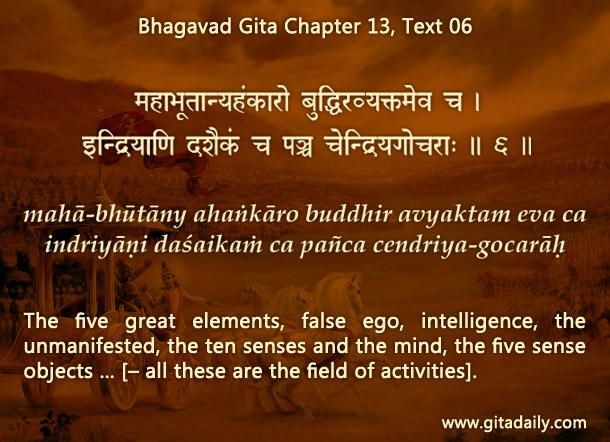The Bhagavad-gita is encyclopedic – not in length, but in scope. It addresses a wide variety of subjects, explaining them all in the context of a theistic devotional worldview.
One such subject referenced by the Gita (07.04-05, 13.06-07) is Sankhya, a system of philosophy that analyzes material nature into various components. Sankhya’s original purpose was transcendental – to assist spiritual seekers by deglamorizing matter, by explaining how the world’s many tempting objects are made of non-tempting material elements such as earth, water and fire.
However, Sankhya had, over time, become divorced from its spiritual purpose and had come to be seen as a non-theistic or even atheistic study of matter. A similar distancing from its moorings has occurred in modern science – its pioneers were theists, but many contemporary scientists are non-theists or even atheists.
Such distancing often occurs because of an innate human weakness: to elevate something that works in one sphere to all spheres. When a branch of knowledge explains some things, we start extrapolating its explanatory potency beyond its valid jurisdiction to everything. In the case of Sankhya (and of modern science too), it can analyze matter, but that ability doesn’t imply the ability to explain everything. Why? Because there is more to reality than matter.
While studying the Gita, we can study Sankhya to the extent it helps us in focusing on spiritual reality, especially the supreme spiritual reality, Krishna. Otherwise, we can approach it functionally, as we approach modern science, engaging with it only if required for service.
The Gita reveals its focus in mentioning Sankhya by stressing not on what the eight material elements are, but on whose they are. They are Krishna’s, and we too are Krishna’s (07.05-06). When we focus on Krishna in our Gita study, we gradually relish supreme fulfillment through devotional absorption in him.
To know more about this verse, please click on the image
Explanation of article:
Podcast:


Leave A Comment